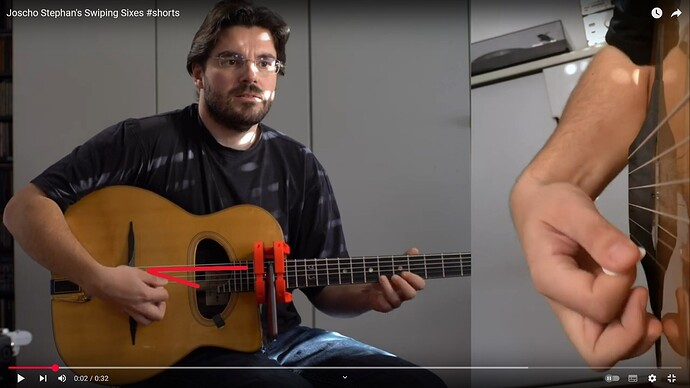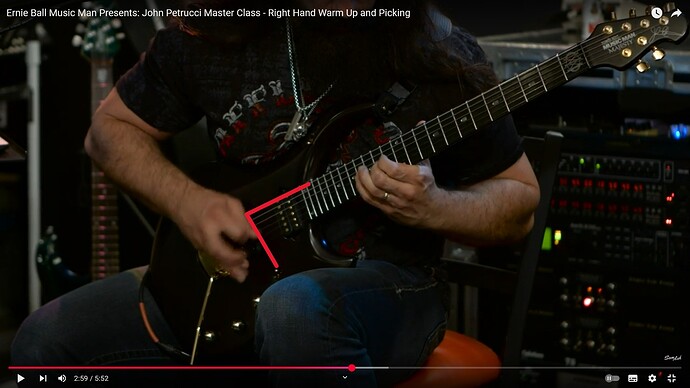I am coming back to this thread because I had a revelation about the “Petrucci cave”. Maybe it´s totally obvious for everyone else, but it wasn´t for me.
One of the problems I had was that the “cave” would not stay “open”, meaning that I would end up muting the higher strings even without intending to do so.
The reason this happened was because I´d deviate too much to the radial side and flex the wrist too much. If you want to play with the half-muted-half-open hand placement, you have to be very careful not to move the pick too much to the radial side. If you do, you end up muting the higher strings as well.
If you look at these images, you might understand what I am trying to get at.
The angle between the thumb and the plane of the strings with Joscho´s hand placement is much narrower than with JP´s. JP´s picking orientation almost forms a 90 degree angle to the plane of the strings. That way, he can manage to place the lower part of the palm on the lower strings while at the same time keeping a space open for the higher strings to ring.
If Joscho on the other hand dropped his hand onto the strings, he´d mute all of them since his hand is much more flexed and also more deviated to the radial side.
Another part that is tricky about this is that it´s much easier (at least for me) to play with USX if you flex more, like Zakk Wylde, Joscho Stephan and Marty Friedman do. But this cannot be incorporated when you play like JP, Anton Oparin and probably Jeff Loomis, where you play with some of the strings muted and some of the strings not muted.







